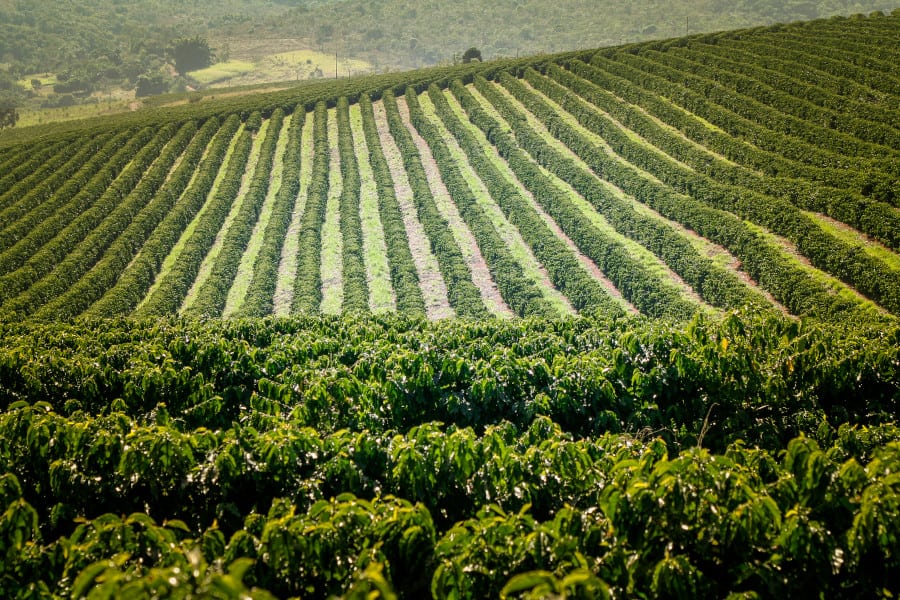The origin of coffee can be traced back to a genus of plants in Ethiopia called “Coffea.” According to studies, there are more than 125 known coffee species globally, with Arabica and Robusta coffee being the two most commercially viable of them all. Robusta, also called Coffea Canephora, is more productive and less susceptible to leaf rust and other plant diseases. However, it has a less refined flavor, making it less cultivated around the world than Arabica.
As far as Coffea Arabica is concerned, it has a better flavor, which is why it’s more cultivated worldwide than Robusta. Furthermore, in Arabica species, there are thousands of varieties available, including Caturra, Bourbon, Catuai, Geisha, and Typica, with each one of them having a different appearance, growth, and taste. As a coffee-lover, you must have noticed on your bag of coffee specialty that both Caturra and Catuai are commonly used as a mix for single-origin coffees – here’s a burning question; why is that so?

Both Caturra and Catuai coffee varieties are commonly mixed in blends because they are usually grown together. According to farmers, it requires a lot of time, money, and effort to separate the cherries from the different trees. As a result, they end up being blended in most of the specialty single-origin coffees.
There are lots of reasons why farmers mostly grow both varieties, Caturra and Catuai, together. One of them – which is the most important – is to prevent the spread of coffee diseases. In the rest of this article, we’ll be further explaining the reason for the mix and everything else that you need to know about the two coffee varieties.
If you want to try this awesome Caturra & Catuai blend, Coffee Bros has a great presentation available! – Sourced from Las Lajas (Costa Rica) farm with Cooked Berry, Cocoa, Wine notes, dried through the natural process to enhance fruity flavor. Fully recommended!
Caturra Coffee Overview
As earlier mentioned, Caturra Coffee is one of the many varieties of the most commercially viable coffee globally – Coffea Arabica. Discovered on a plantation in Minas Gerais, in Brazil between 1915 and 1918, Caturra is a natural mutation of the Bourbon varietal – another variety of the Coffea Arabica species that was discovered in the 18th century on the island of Bourbon.
Just like Bourbon, Caturra has a few negative features. First, it has a single-gene mutation, which causes it to grow tiny. Another negative aspect of the plant is that it’s not very pest resistant – making it susceptible to coffee leaf rust and other diseases. Also, it can be challenging to grow, as it requires very rich soil, more care, and slightly lower altitudes (between 500 and 1800m).
Despite its short nature, Caturra coffee is one of the most productive of all coffee varieties globally. That’s so because the plant grows with many branches. That’s not all! Caturra is also known for its good quality and flavor.
Furthermore, its dwarf feature makes it easy for many farmers to pick it by hand, especially during its harvest period. The typical cup characteristics of the Caturra variety include bright acidity, low-to-medium body, with citric lemon notes.
If you want more information about this bean, we have a full article con Caturra available here, you would find detailed information on this type of bean.
Catuai Coffee Overview
Just like the Caturra varietal, Catuai is another variety of the Coffea Arabica species. The origin of the Catuai plant can be traced back to back to 1948. At the time, the Instituto Agronomico (IAC) of Sao Paulo State in Campinas, Brazil, began developing a high-yield coffee variety.
Furthermore, speaking of the Catuai variety’s discovery, it resulted from the artificial breeding of two different types, Caturra and Mundo Novo – a natural cross between the Bourbon and Typica varieties. Caturra was chosen because of its short/compact quality – the reason for that is to allow plants to be closely spaced when farmers are planting them. As for Mundo Novo, the coffee variety was chosen for cross-breeding because of its high productivity levels at medium to high elevations.
That said, there are two types of Catuai coffee; the Red and Yellow Catuai group varieties. Both of them were released in 1972, after many years of research by the IAC and pedigree selection – that’s the selection of individual plants through successive generations. Speaking of their qualities, the two plants are relatively short and very resistant to strong winds and rain.
Also, both the Red and Yellow Catuai group varieties have significant productivity levels and good cup quality – these made them popular in Brazil and other countries across the world, including Honduras and Costa Rica. However, they are highly susceptible to coffee leaf rust and other diseases. All thanks to their heights and shape, they are effortless to pick during the harvesting period and pest and disease treatments.
Why Are Caturra And Catuai Varieties Commonly Mixed In Blends?
As we all know, both Caturra and Catuai varieties have a lot of things in common. First, both coffee varieties are short and compact qualities. Furthermore, they are both high-yielding varieties, which are susceptible to coffee leaf rust and other diseases. Apart from that, they are not easy to grow, as they require soil with a lot of nutrients and slightly lower altitudes of 500 meters or above.
Because of these similarities, both plants are usually planted closer together. One of the benefits of planting both coffee varieties together is to achieve a higher planting density and allow farmers to gain easy access to their cherries during the harvesting period.
To the burning question of why Caturra and Catuai commonly mixed in the same coffee bag? The answer to the problem is that it requires a lot of time, effort, and money to separate the cherries from the different trees during harvest. That’s the main reason why they are usually blended in most of your specialty single-origin coffees.
That said, here’s another burning question; why do farmers choose to grow both varieties, Caturra and Catuai, together in a way that makes them difficult to separate?
Why Farmers Usually Plant The Two Varieties Together?
Although there are a couple of reasons why farmers do that, the main purpose is to prevent diseases. But how is that even possible?
Have you ever heard of genetic polyculture? If not, polyculture is the process in which more than one plant species is grown simultaneously, on the same farmland. Some of the benefits of doing that include the following:
- It helps to increase biodiversity and yields
- It enhances the health of the soil
- It helps to eliminate fossil-fuel fertilizers and pesticides
- It reduces the spread of coffee diseases
- It helps to decrease soil erosion
Since both coffee varieties, Caturra and Catuai, are very susceptible to coffee leaf rust and other diseases, farmers choose to grow them together to prevent the epidemic of diseases.
